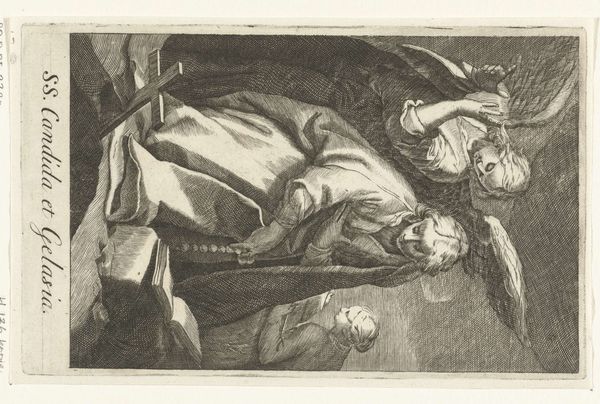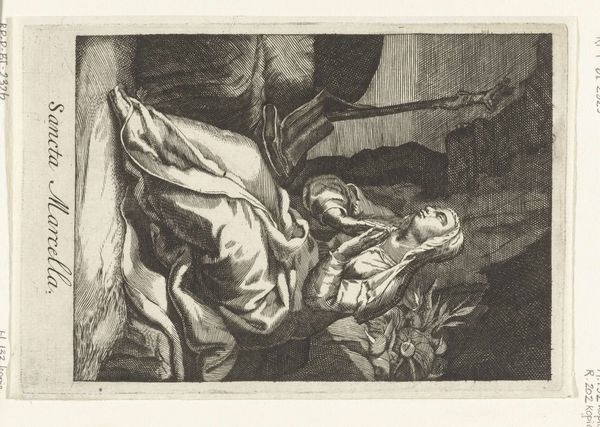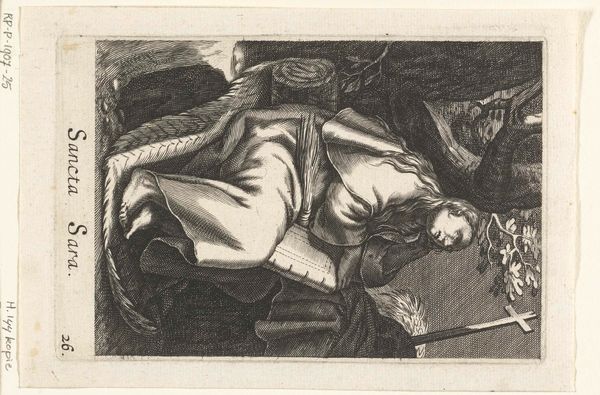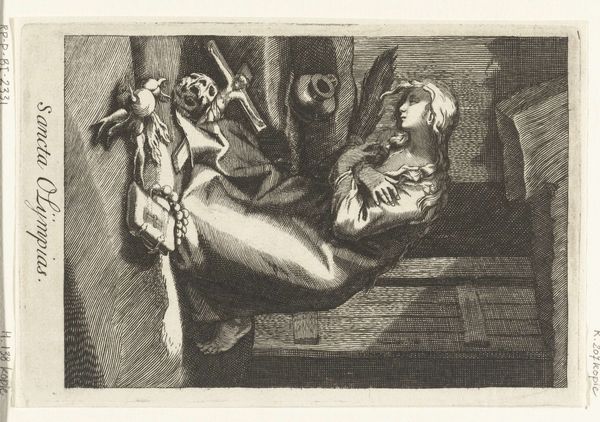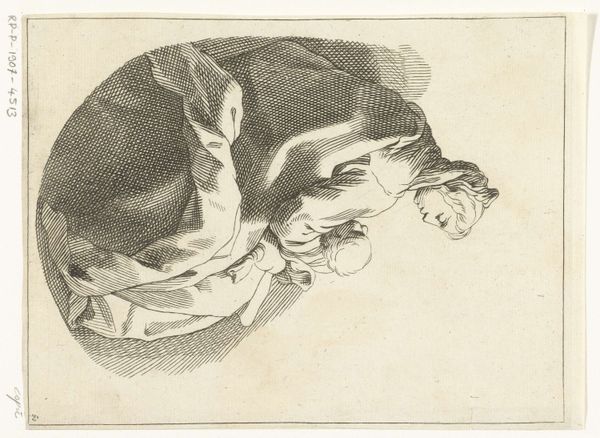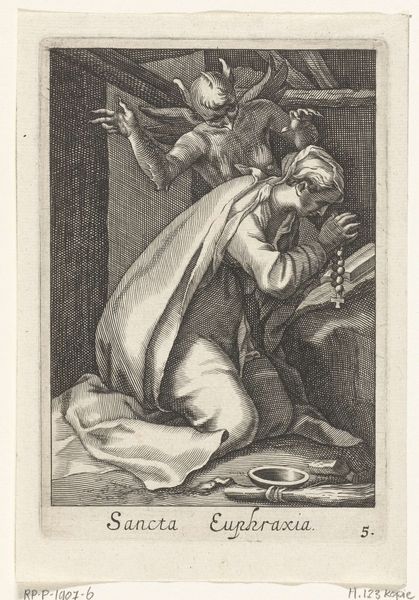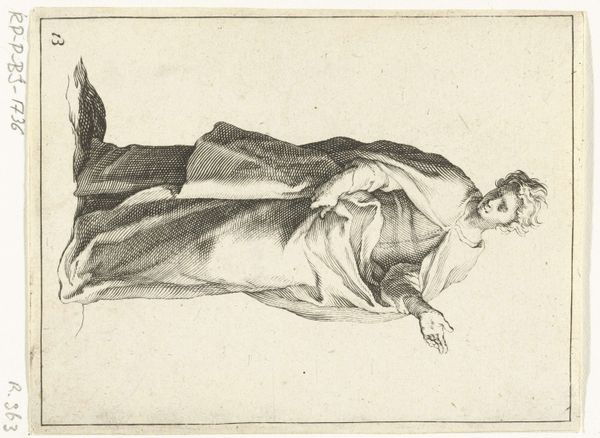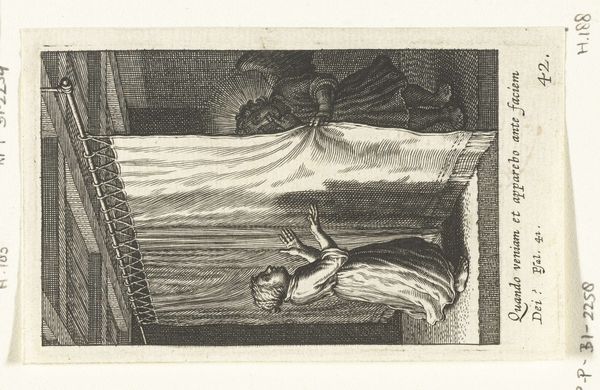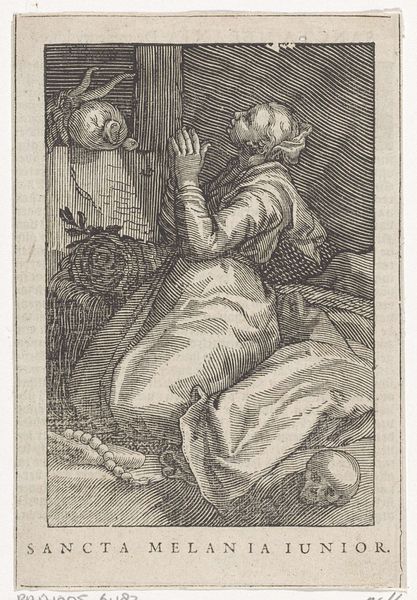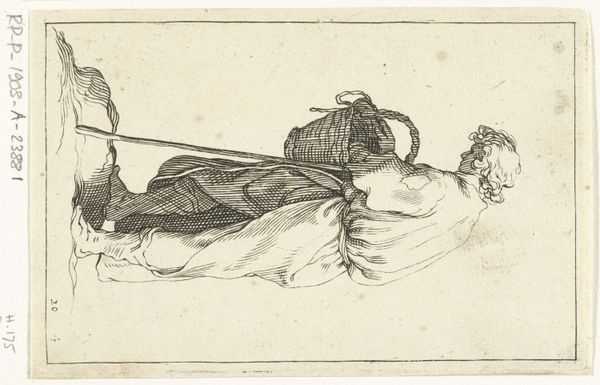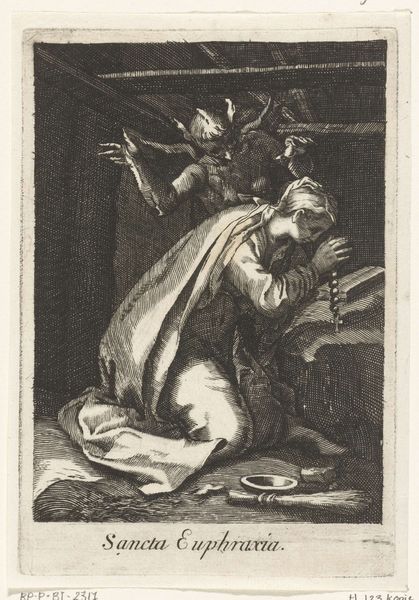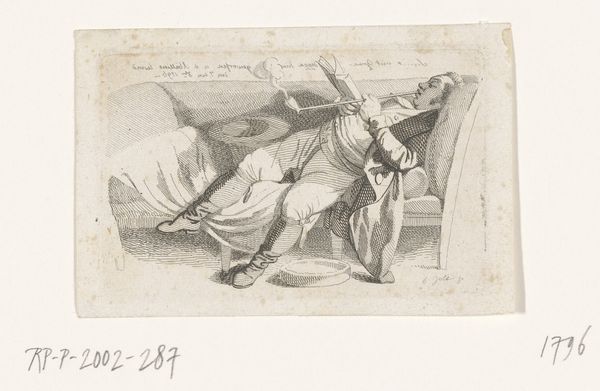
print, engraving
#
portrait
#
baroque
# print
#
old engraving style
#
history-painting
#
engraving
Dimensions: height 142 mm, width 95 mm
Copyright: Rijks Museum: Open Domain
Curator: This engraving, held at the Rijksmuseum, presents Saint Melania the Elder as a hermit. Created sometime between 1590 and 1662 by an anonymous artist, it depicts her in prayer, rosary in hand. Editor: There’s a somber beauty to this. The stark contrast and fine lines of the engraving really pull you in. The way the light catches on her garments almost makes it feel sculptural. Curator: Engravings like this were crucial for disseminating images and ideas across Europe at the time. Prints made religious figures more accessible and promoted certain virtues. Editor: Thinking about the labour involved – the painstaking detail, the mastery of the engraving tools – it gives me a greater appreciation. Consider how many impressions might have been pulled from a single plate! Imagine the dissemination! Curator: Absolutely, these prints had a vital function. Saint Melania, a wealthy Roman widow who renounced her status for a life of piety, served as an inspiring figure, especially for women within the Church. Her image was a powerful tool for shaping social expectations. Editor: Look closely, and you’ll notice the different densities of the cross-hatching to create areas of shadow and depth. This isn’t just about illustrating a religious narrative; it’s a display of craft, demanding respect for its own production. Curator: The distribution networks are what interest me most. How did the marketplace shape these images, which workshops reproduced them, and how did different religious orders utilize these types of art to broadcast their values? Editor: Right, and let’s not forget the materiality itself – the paper, the ink. They aren’t passive supports but rather integral components that affect our perception. The survival of prints such as this speaks volumes of a collective desire for access. Curator: Understanding the societal role that engravings served within the Baroque period enhances our interpretation, enriching the context behind this compelling portrayal. Editor: Considering it's an engraving allows us to shift perspective: the means of production informs the message just as profoundly as any symbolism represented.
Comments
No comments
Be the first to comment and join the conversation on the ultimate creative platform.
